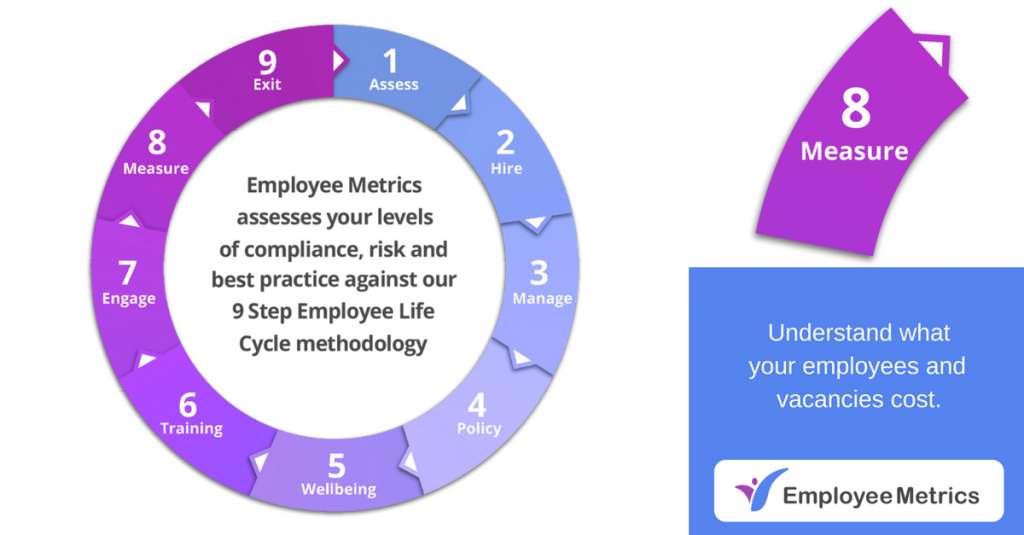
Measure: Step 8 of the Employee Life Cycle
If you are new to our Employee Life Cycle series, click here to go back and begin at Step 7 Engage, or read on for Step 8 Measure.
Absenteeism costs the Australian economy in excess of $44 billion in lost productivity
Every day, more and more organisations are facing challenging questions regarding the measurement, cost and effectiveness of their workforce. With a total of 92 million working days being lost through unexpected absences new practices and processes are required to address the cause and measure effective change.
Measure, manage, maximise
There are important reasons why organisations should measure the effectiveness of their workforce. Once we measure, we know the present state of the workforce and the actions needed to begin controlling and shaping better processes. We can then start to manage what is working, and what is not, to then maximise the investment of people and processes to help drive sustainable performance and productivity throughout the organisation.
Efficient processes are paramount
Having the framework to manage the ever-changing employee relationship is the first step to help measure employee turnover, workforce productivity and absenteeism. Having the ability to understand direct and indirect employee costs and what employees are costing the organisation, versus the cost of inaction, are critical efficiency drivers.
These include;
- Cost per hire: the costs associated with bringing on a new hire
- Time to fill the open position: the total number of days it takes to fill a job opening
- HR expense factor: the ratio between total organisational expense and specific HR expense
Workforce changes are now the norm
The modern workforce has undergone a significant shift in values and expectations. The employee of just 5 years ago is very different than the employee of today. Employee Metrics helps improve future success and manage change through qualitative analysis of what needs to be measured throughout the employee and HR relationship.
Step 8: Measure: Understand what your employees and vacancies cost.
Employee Metrics diagnostic platform walks you through a detailed assessment, supported by an experienced HR Consultant. It generates a detailed report of your position across the 9 steps of the Employee Life Cycle.
Watch out for next week’s Employee Metrics article;
Step 9 Exit: Reduce the impact of resignations and exit non-performers legally.